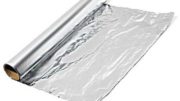Everything with a signal is measured in dB’s, also known as decibels. You might have thought that decibels were a unit of sound but they’re not really, they’re a unit of change. We talked about dB’s in detail several years ago in a strangely unpopular article, so let’s try it again but make it a little simpler.
Let’s leave out the fancy math and boil it down to two things.
dB’s are a little weird to measure.
The whole point of a dB is it lets you measure very big changes without going to very big numbers. Each 10dB difference increases the signal power by 10x, so if you’re gaining (or losing 40dB) that’s a 10,000x difference in signal. That’s a lot, but much of the time that’s not super important. What is important is…
dB’s make it easy to measure the impact of amplifiers and cable runs.
The coolest part of dBs is that you can add and subtract them. If you were talking about volts or watts, it’s a lot harder to measure the differences. With dB’s it’s stone cold simple. If you have a signal that’s -30dB, and you add a 25dB amplifier, the signal becomes -5db. (Add 25 to -30 and you get -5.) If your cable is rated to lose 7dB for every 100 feet, then if the signal level was -30dB and you run 100 feet, it’s now -37dB. (Subtract 7 from -30 and you get -37.)
You can even get fancy: start with a -105dB cell signal, run it through 50′ of cable for 5dB loss, add a 65dB booster, and the output level at the booster is -45dB. (-105, subtract 5, add 65 = -45.)
See, dB’s aren’t that hard to understand, after all.
Most of the time dBs are negative numbers because they measure really small power levels, that’s pretty much what you need to know there.
Added bonus: Let’s try to understand logarithms.
dBs are a measure of how much more or less of something you have. They’re also logarithms of the actual amount of something you have. Understanding dBs will lead you to understand logarithms, which most people don’t get at all if they’ve heard of them at all.
Why logarithms used to be really important and they’re nearly useless now
Before calculators, it was very hard to multiply or divide large numbers. If you wanted to multiple 13464 x 5061, it took a long time and there were a lot of manual operations that made it really annoying. So, what people did was use logarithms.
A logarithm is a description of a power of 10. (Actually it can be other powers but let’s not worry about that right now.) 10 the power of 2 is 100. So, the logarithm of 100 is 2. That sounds simple, right?
So there’s this magic thing that happens. If you take the logarithms of two numbers and add them, the resulting number is the logarithm of the number you’d get if you multiplied the original two numbers.
(whaaaaat?)
Let me explain simply.
- The logarithm of 100 is 2.
- The logarithm of 10,000 is 4 (10,000 is 10 to the 4th.)
- If you add 2 and 4 you get 6.
- The logarithm of 1,000,000 is 6.
- If you multiply 100 x 1000, you get 1,000,000.
So all you need is to know what the logarithms of any number are and you can multiply any two numbers. It used to be that there were these books where you could find the logarithms of any number. Then you could add them and then find the antilogarithm (the number whose logarithm is the number you know) and bingo, you’ve multiplied these two numbers.

You could also use a simple device called a slide rule to get very close to the right number if you didn’t have a huge book of logarithms lying around.
Logarithms and dBs
dB numbers are actually logarithms. Specifically, the number of dBs is ten times the logarithm. 40dB = 10,000 times the power. 10,000 = 10 to the 4th (so the logarithm of 10,000 is 4). The “ten times” part comes in because the “bel” is the actual measurement and we’re measuring in “decibels,” in other words 1/10th of a bel.
You may never really run into a situation where you need to understand logarithms, but hey if you get sent back in time to 1940, people will really be impressed.





